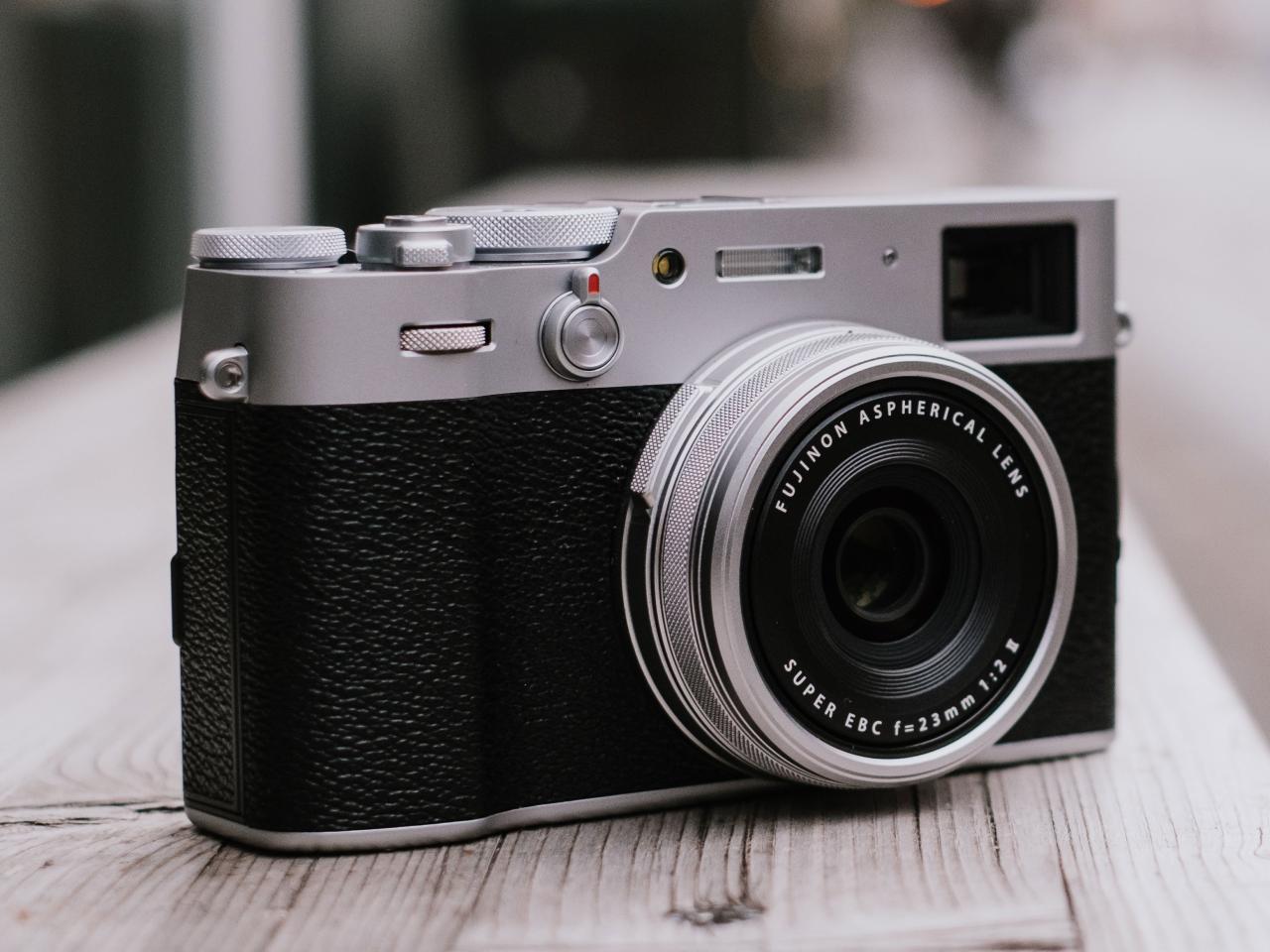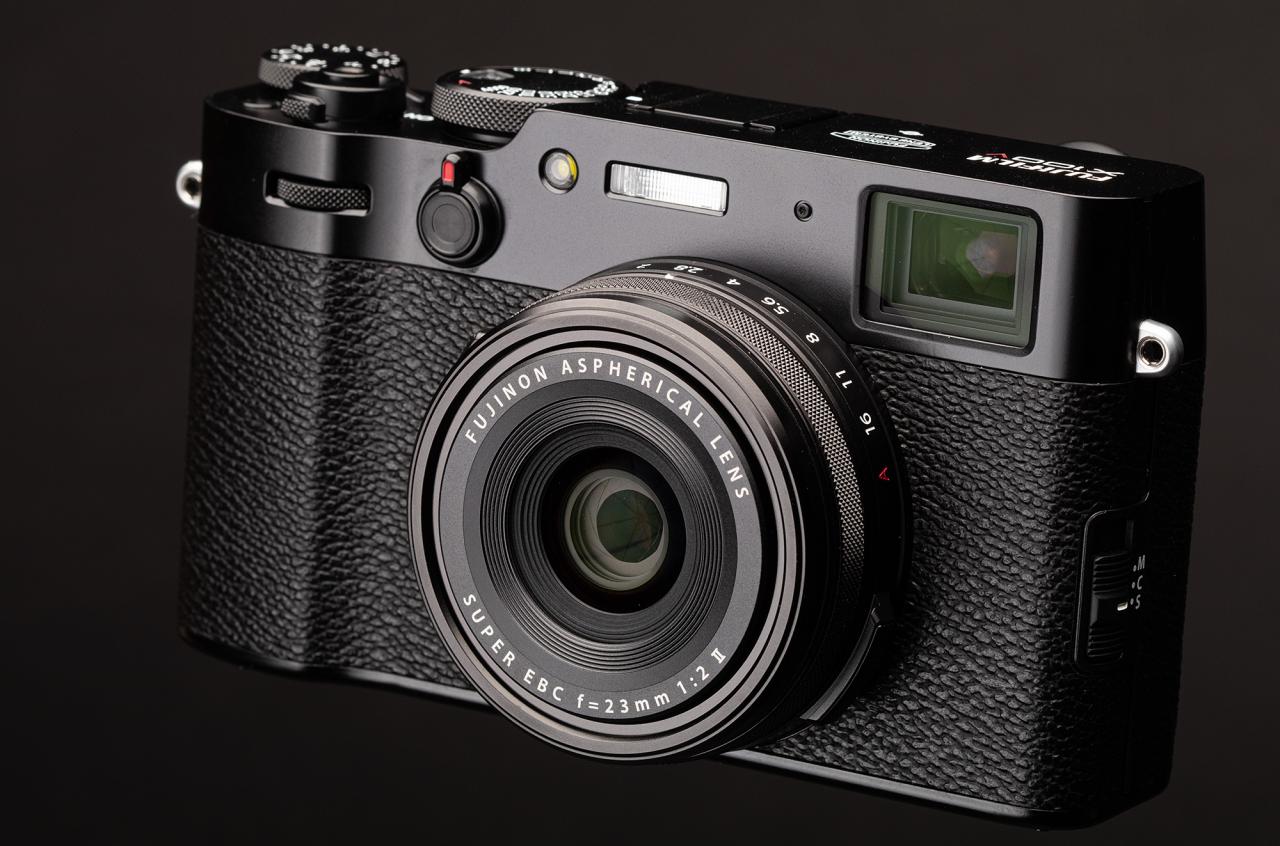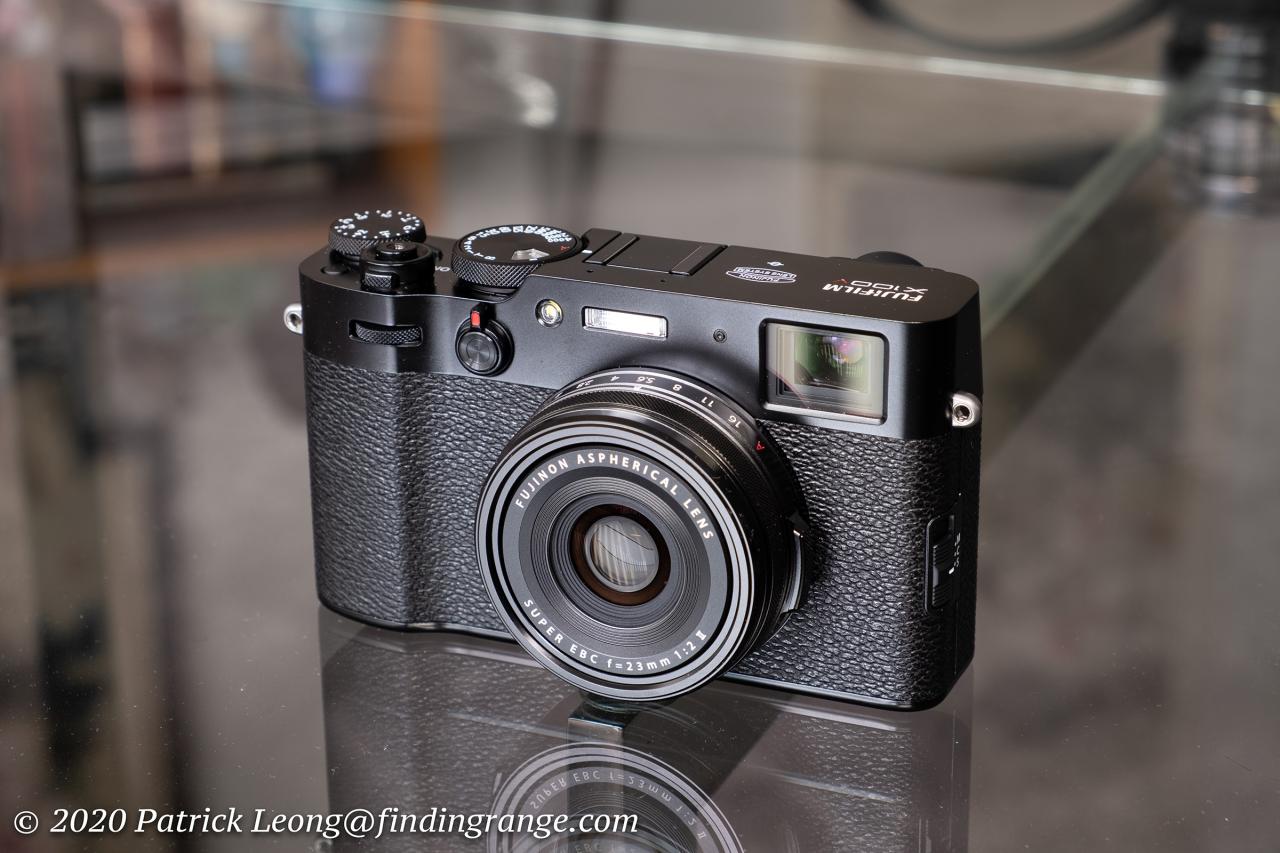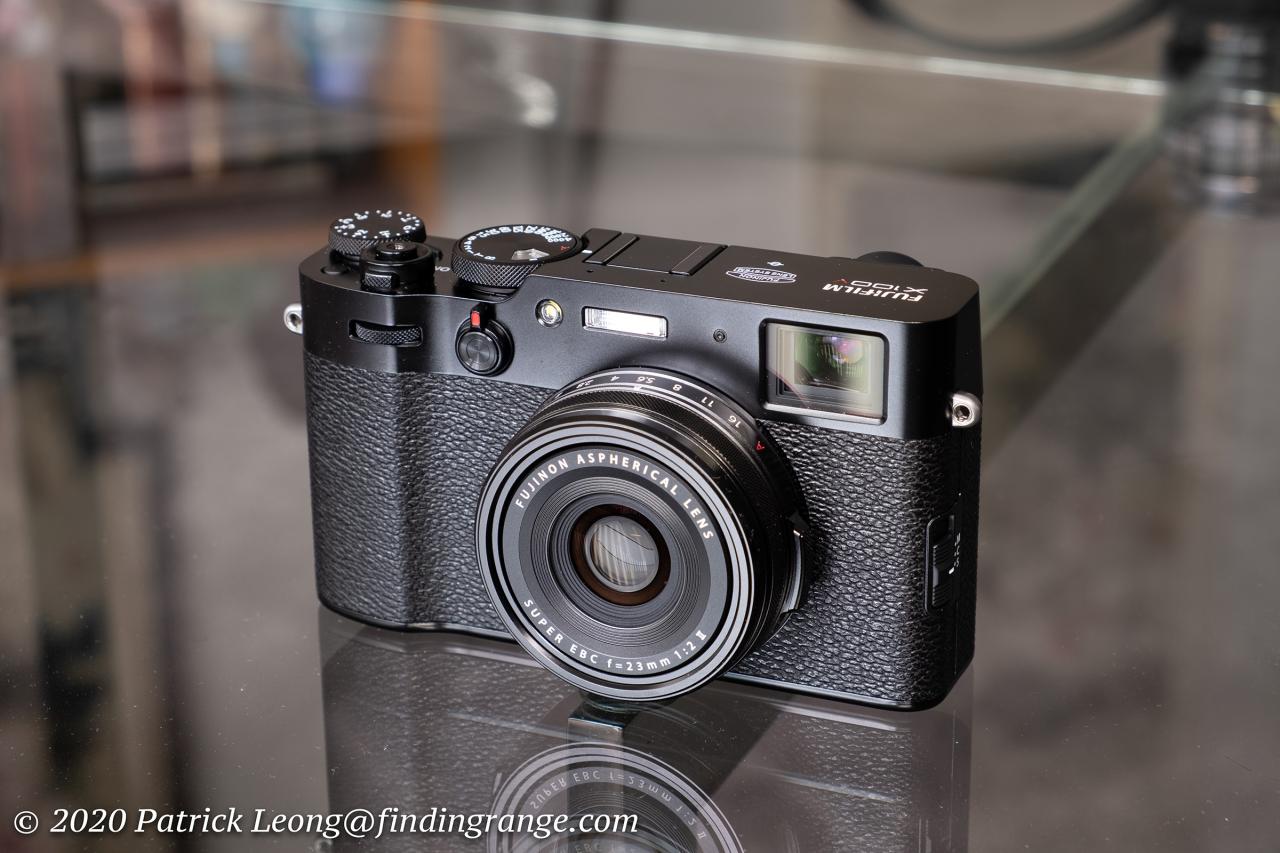Fujifilm X100V: The moment you pick up this camera, you sense its legacy. A compact powerhouse designed for discerning photographers, the X100V seamlessly blends classic aesthetics with cutting-edge technology. Its fixed 23mm lens, renowned for its exceptional image quality, invites a unique approach to photography, fostering creativity and spontaneous capture. This review delves into the camera’s features, performance, and overall user experience, providing a thorough examination of its strengths and weaknesses.
From its intuitive controls and hybrid viewfinder to its impressive film simulations and robust image processing, the X100V caters to both seasoned professionals and enthusiastic amateurs. We’ll explore its capabilities in various shooting conditions, compare its performance against competitors, and examine the expansive ecosystem of accessories available to enhance its functionality. This in-depth analysis aims to provide a comprehensive understanding of this iconic camera.
Fujifilm X100V: A Deep Dive
The Fujifilm X100V, a compact camera renowned for its retro aesthetics and exceptional image quality, continues to captivate photographers. This detailed exploration delves into its features, performance, and overall user experience, comparing it to its predecessors and competitors in the market.
The Fujifilm X100V’s compact size makes it ideal for street photography, capturing candid moments effortlessly. However, even with its portability, consider the potential distractions; for example, news reports of incidents like those detailed in this article about drone crashes in New Jersey might remind you to be mindful of your surroundings while shooting. Ultimately, the X100V’s image quality remains its strongest asset, allowing for stunning results regardless of the environment.
Fujifilm X100V Camera Overview

The X100V boasts a refined design, improved autofocus system, and enhanced image processing capabilities. Its core strength lies in its seamless blend of classic aesthetics with modern technology.
The camera features a 26.1MP X-Trans CMOS 4 sensor and the X-Processor 4, providing superior image quality and speed. The fixed 23mm f/2 lens (35mm equivalent) offers a versatile focal length ideal for street photography, landscapes, and portraits. Its image quality rivals many larger, more expensive cameras, producing sharp, detailed images with accurate color reproduction.
The fixed lens, while limiting zoom capabilities, offers distinct advantages. Its compact design and exceptional sharpness contribute to its overall appeal. Compared to cameras like the Sony RX1R II and Ricoh GR III, the X100V holds its own in terms of image quality, particularly in its dynamic range and film simulations.
| Model | Sensor | Lens | Key Features |
|---|---|---|---|
| X100 | 16.3MP X-Trans CMOS I | 23mm f/2 | Hybrid Viewfinder, Film Simulations |
| X100T | 16.3MP X-Trans CMOS II | 23mm f/2 | Improved Autofocus, Wi-Fi |
| X100F | 24.3MP X-Trans CMOS III | 23mm f/2 | Advanced Film Simulations, Improved AF |
| X100V | 26.1MP X-Trans CMOS 4 | 23mm f/2 | Improved Autofocus, Tilting LCD, Phase Detection AF |
User Experience and Ergonomics

The X100V’s user interface is intuitive and user-friendly, despite its array of manual controls. The physical dials provide a tactile and satisfying shooting experience, allowing for quick adjustments to aperture, shutter speed, and ISO.
While the physical dials offer speed and precision, they might present a learning curve for beginners. The hybrid viewfinder, seamlessly switching between optical and electronic modes, is a standout feature, offering both the classic rangefinder experience and the benefits of electronic preview. Compared to other compact cameras, the X100V offers a superior level of tactile control and a more engaging shooting experience.
The user flow for taking a photograph is straightforward: Power on, select shooting mode (Aperture Priority, Shutter Priority, Manual, etc.), compose the shot using the viewfinder or LCD, adjust focus and exposure as needed, and press the shutter button.
Image Quality and Performance

The X100V excels in various shooting conditions. In low light, its image stabilization and high ISO performance minimize noise and maintain detail. In bright sunlight, the camera accurately exposes images, preserving highlights and shadows. Its dynamic range is exceptional, allowing for significant recovery in post-processing.
Example 1: A low-light street scene captured at ISO 3200 shows minimal noise, with details in the shadows and highlights well-preserved. Example 2: A brightly lit landscape image demonstrates the camera’s ability to maintain detail in both the bright sky and the shadowed foreground. The color reproduction is accurate and vibrant across the spectrum.
The Fujifilm X100V, with its exceptional image quality, is perfect for capturing everyday moments. News reports, however, highlight a different kind of capture; the recent incident involving a drone shot down in NJ raises questions about airspace regulations. Returning to the X100V, its compact size makes it ideal for discreet street photography, a stark contrast to the larger-scale event surrounding the downed drone.
Compared to cameras with similar sensors, the X100V consistently delivers high-quality images with excellent detail and color accuracy. The X-Processor 4 ensures fast processing speeds, making it ideal for capturing fleeting moments.
- Portraits: Use Aperture Priority mode, select a wide aperture (f/2 – f/2.8), and focus on the subject’s eyes. Employ Classic Chrome film simulation for a unique look.
- Landscapes: Use Aperture Priority mode, select a narrow aperture (f/8 – f/16), and use a tripod for sharpness. Experiment with Provia film simulation for natural colors.
- Street Photography: Use Aperture Priority or Shutter Priority mode, depending on whether you prioritize depth of field or motion blur. Consider Acros film simulation for a monochrome look.
Film Simulations and Creative Control
The X100V offers a wide array of film simulations, each emulating the look and feel of classic Fujifilm films. These modes significantly impact the final image’s color palette, contrast, and grain.
For instance, Classic Chrome produces muted tones and subtle color shifts, while Velvia creates vibrant, saturated colors. By adjusting parameters like sharpness, grain, and highlight/shadow tones, photographers can further fine-tune the creative look. Example 1: A portrait shot in Classic Chrome demonstrates its subdued tones and film-like quality. Example 2: A landscape image in Velvia showcases its rich saturation and vibrancy.
| Film Simulation | Effect on Image Characteristics |
|---|---|
| Provia | Natural and balanced color reproduction, high sharpness |
| Velvia | Vibrant and saturated colors, high contrast |
| Astia | Soft and smooth tones, low contrast |
| Classic Chrome | Muted tones, subtle color shifts, unique film-like quality |
| Acros | High-resolution monochrome, smooth tonal transitions |
Accessories and Expandability, Fujifilm x100v
The X100V is compatible with various accessories, including external lenses (via adapters), flashes, and additional batteries. Using external lenses expands the camera’s versatility, while external flashes provide more control over lighting. The camera offers USB-C connectivity for fast data transfer and charging.
Using a high-quality external flash can significantly improve the quality of images in low-light situations or when more controlled lighting is required. An additional battery is essential for extended shooting sessions.
- Additional Battery: Extends shooting time.
- External Flash: Provides more powerful and controlled lighting.
- Lens Adapters: Allows use of other lenses.
- Leather Case: Offers protection and improved grip.
Strengths and Weaknesses Compared to Competitors
The X100V competes with cameras like the Sony RX1R II and Ricoh GR III. While the X100V excels in its film simulations, intuitive controls, and hybrid viewfinder, the Sony RX1R II offers a higher resolution sensor. The Ricoh GR III boasts a slightly wider lens.
| Feature | X100V | Sony RX1R II | Ricoh GR III |
|---|---|---|---|
| Sensor Resolution | 26.1MP | 42.4MP | 24.2MP |
| Lens | 23mm f/2 | 35mm f/2 | 28mm f/2.8 |
| Film Simulations | Yes | No | Limited |
| Viewfinder | Hybrid (Optical & Electronic) | Electronic | Electronic |
The Fujifilm X100V stands as a testament to the enduring appeal of a thoughtfully designed, high-performing compact camera. While it may not be the ultimate solution for every photographer, its strengths in image quality, ergonomics, and creative control make it a compelling choice for those seeking a blend of classic aesthetics and modern technology. Its fixed lens encourages a deliberate approach to composition, forcing photographers to engage more actively with their surroundings.
Ultimately, the X100V’s success lies in its ability to inspire creativity and deliver consistently exceptional results.
Query Resolution: Fujifilm X100v
What is the battery life like on the Fujifilm X100V?
Battery life is generally considered decent, but it varies depending on usage. Expect to get around 350 shots per charge under typical conditions. Consider carrying a spare battery for extended shooting sessions.
Does the Fujifilm X100V have 4K video capabilities?
Yes, it records 4K video at up to 30fps.
Is the Fujifilm X100V weather sealed?
No, the X100V is not weather-sealed. Use caution in wet or dusty conditions.
Can I use external microphones with the Fujifilm X100V?
Yes, it has a 3.5mm microphone jack for external audio input.
